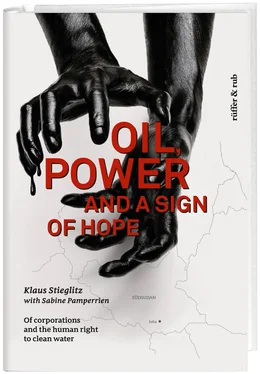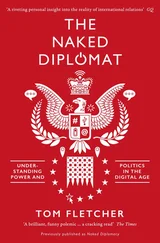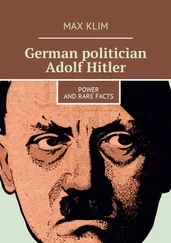In his notes, Brehm described the cycle of violence and counter-violence prevailing in Africa. According to Brehm the former stemmed from the whites, who employed slavery as one of their means of ruthlessly oppressing the people of Sub-Saharan Africa. This oppression produced a widespread hostility towards whites—an attitude that Brehm found completely understandable—among the Africans. This hostility prevented von Müller and Brehm from proceeding upon their travels in Southern Sudan. As he noted resignedly: “The hunting for slaves bars the way for researchers seeking to explore the central lands of Africa.” 3
*
Daniele Comboni was a Catholic priest. In 1857, he embarked upon his first trip to Africa. He was accompanied by five other missionaries. Their trip brought them to Southern Sudan, where he experienced first hand the misery and the enslavement of Africans. These experiences led him to found a mission. Comboni’s main objective was to put an end to slavery. His approach to missionary work sounds like it could have been formulated today: “Enabling Africa to rescue Africa.”4 Overcoming strong objections from within the ranks of his own church, Comboni recruited women and laypersons to participate in missionary work.5 The greatest difference between Comboni’s approach and those of previous missions was that he granted Africans full respect by viewing them as equals, ones well capable of being responsible for the managing of their affairs. One of Comboni’s main principles was that the Europeans could well support and teach their counterparts—but should not patronize striving to form Africans according to European model.6
Comboni’s missionary work proved to be a huge success. The ethnic groups living in Southern Sudan are cultures highly open to the Christians’ visions of divinity. The effects have proved lasting. Southern Sudan is still the realm of nature-based religions and of Christianity—in contrast to northern Sudan, in which Islam predominantly prevails.
*
June 11, 1955. 4 pm. The start of the famous 24 Hours of Le Mans. The weather is hot and humid. A thunderstorm is in the offing — as shown by the dark clouds crowding the horizon. The sun is still, however, shining over the race course.
More than 200,000 spectators are lining the 13 kilometers of the race course, which is, on non-race days, comprised of normal-use roads. Case-in-point: the long straightaway. It is part of the road connecting Le Mans and Tours. The fastest cars reach speeds of nearly 300 kilometers an hour on the straightaway. Not surprisingly, this is the most popular place from which to watch the race. These “Populaires” are cheap. That’s because fans have to stand. The “Populaires” are located in front of the more expensive bleachers. The former offer, however, the best views of the starting positions and the pits. The crowd in the Populaires gets to hear the yelling of the race managers and the mechanics, and gets to sample the odor of fuels and of abraded clutches and brakes. The crowd is comprised of thousands of people, all thronging the race course, from which they are separated only by a nearly one meter-high fence made of bales of hay and of planks. The crowd is enjoying itself. The race is being covered on-site by the world’s media, many of which are reporting live from Le Mans. Among the media are film teams, which are shooting full-color, Cinemascope news flashes for the weekly reports shown in cinemas.
174 minutes after the race has commenced, several race cars zoom into the narrow stretch in front of the bleachers. The crowd cranes to get a good view. This is because the race’s leaders are in the pack. Among the leaders: the UK’s Mike Hawthorn, who is driving a Jaguar, and the drivers of both of the Mercedes “Silver Arrows”. These three are in a neck-on-neck battle for victory. The cars’ manufacturers —Jaguar and Mercedes—are contending for both the World Cup’s drivers’ and manufacturer’s championships. Mercedes is under pressure. It has to notch a victory in Le Mans if it plans on retaining its opportunity to win the title.7 At first glance, this battle is about prestige and about gaining incentives that convince potential buyers to purchase the manufacturers’ vehicles. These incentives constitute powerful, not-to-be-underestimated advertising. A victory in Le Mans showcases the technical superiority of the manufacturer’s products—in an era in which the automobile industry is embarking upon its boom.
This battle is also about something more, something deeper. World War II concluded a scant ten years previously. This battle is thus between the UK and Germany.8 Mike Hawthorn’s nationalism is well-known. During the days preceding the race, Hawthorn repeatedly proclaims that he will never allow himself to be beaten by a German. The flanks of his Jaguar D-Type are emblazoned with the national emblems of the British army. There are those who still remember that the Mercedes Silver Arrows were vehicles for the Nazis’ propaganda in the pre-World War II era.9 The Nazis were the main sponsors of the Sliver Arrows10, providing millions of marks to the racing department of the Stuttgart-based manufacturer of automobiles.11 The Nazis viewed car racing as a “kind of mental armament, one preparing the people to wage war”12 . Headed by Albert Neumann, the Mercedes team had been highly successful in the pre-World War II era. Once the war was over, the team—featuring the same personnel—set forth its successes. The only difference: it had “converted to democracy”, as Guido Knopp, a historian working for Germany’s “ZDF” national broadcaster, described it in a work published several decades subsequently.13
Mercedes’ managing board has given its racing team unmistakable marching orders. The team is to win both titles in Formula 1—the driver’s and the manufacturer’s championships. Mercedes has backed these plans with generous funds and other resources. The company has founded a dedicated racing department, and has hired what has come to be more than 200 persons to staff it. This staff consults with a further 300 specialists—who work for other departments at Mercedes.
It has taken the Mercedes team a mere four years to transform models from the prewar era into high-performance race cars. Nineteen fifty four was the newly-revamped Silver Arrow’s first Grand Prix season. The team’s first race comes in the middle of the season. It is the Grand Prix of France, which is held on July 4, 1954 in Reims. It turns out to be a historic day for the Silver Arrows—and for Germany’s national football team. In a match played in Bern, Switzerland, the team wins the world championship. At Reims, the Mercedes team gains both titles. Thanks to these victories, July 4, 1954 becomes for many Germans a turning point in the history of the newly-constituted Federal Republic of Germany. It marks the end of the era of disgrace and obscurity, and the beginning of a new dignity and identity.14 An English newspaper calls July 4, 1954 “Der Tag for Germans”.15
Mercedes’ record of success in the sports car races also commences in 1954. Mercedes broadcasts a commercial in 1954 and 1955. Under the name “Pioneers of Progress”, the film is shown in the UK and in the USA. A highlight of the film is the raising of the German flag (which is comprised of the colors of black, red and gold) in honor of Mercedes’ great victory in France. The flag symbolizes the ties binding all of Mercedes’ staff members working on and for the racing team. The flag also expresses their aspirations.16
Britain’s press would continue until the 1980s to cultivate World War II-caused anti-German sentiments. These mean that Mike Hawthorn was by no means the only person who viewed the duel on the race track as being a continuation of the war, only this time on another venue.17 The spectators at Le Mans on this June 11, 1955 have been observing how Mike Hawthorn is implementing this policy of “no surrender” ever since the start of the race. The young Briton has already twice disregarded the signs issued by his team that it is time for him to come to his pits to fill up. Hawthorn is obviously determined to keep his lead at all costs.
Читать дальше












